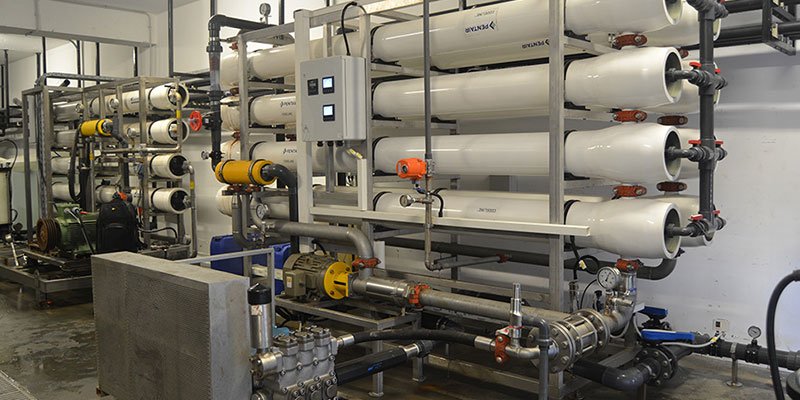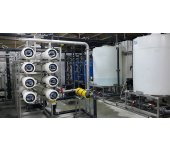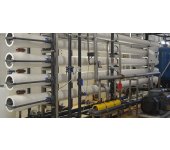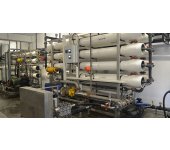AQUALINE TETRA SERIES SEAWATER REVERSE OSMOSIS SYSTEMS
100 m3 / day to 1500 m3 / day
The membrane filtration process for obtaining pure water, which separates all unwanted minerals from water, applied to waters where conventional treatment systems are insufficient (seawater, water with high conductivity, well waters, etc.) is called reverse osmosis.
STANDARD FEATURES
Membrane vessels FRP
TFC Spiral Wound Membranes 8 "diameter
AISI304 or AISI316 Dublex quality stainless steel high pressure pump
St37 Epoxy painted Carbon Steel or AISI304 Stainless Steel Skid
5 Micron precision cartridge filter
Low pressure line U-PVC PN16
High pressure line AISI316Ti or Dublex Stainless Steel
Introduction Electric actuated butterfly valve
Low and High pressure switch
Clean and Waste water flow meters
Glycerine manometers
Product water conductivity indicator (0-2000µS / cm)
Inlet and Product water pH Meter (optional)
On-Off switch
Alarm and Status lamps
380 V / 50Hz / 3ph
IP56 control panel
Recommended Inflow Water Limits
Inlet water TDS: 38,000 - 41,000 ppm
Working pressure: between 50 and 70 bar
Inlet water pressure: 2 to 5 bar
Inlet water pH range: 6 - 8
Silica (SiO2) Tolerance 25 ppm max. @ 60% efficiency
Max. Inlet water temperature = 30º C Max.
Max Iron (Fe) tolerance 0.05 ppm, Antiscalant dosage 0.2 ppm if available
Hydrogen Sulfide should not be.
There should be no turbidity. (NTU<1)
SDI < 5
Microbiological contamination should be removed.
MEMBRANE CLEANING CHEMICALS
The most common chemicals used for membrane cleaning are acid and alkaline based. Acid cleaners are designed to remove inorganic and iron deposits and performed at a pH of about 2-3. Alkaline cleaners are designed for removal of biological matter, organic foulants, and silica deposits and performed at a pH of about 10-11.
MEMBRAN CLEANING PROCEDURE
Reverse Osmosis membrane can experience a reduction in performance due to the accumulation of deposits on the membrane surface. Usually mineral scale, colloidal particles, biological matter, and insoluble organic compounds are the causes of membrane fouling. When production flow drops by at least % 15, or the differential pressure increases by % 15 over normal operating conditions, membrane cleaning should be performed. For more information, refer to the operating instructions.







